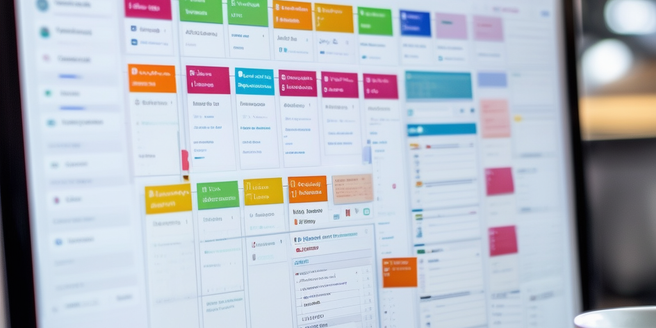
Understanding Workplace Efficiency Needs
Workplace efficiency is pivotal for organizational success, yet understanding it requires a deep dive into current operations to identify bottlenecks. Key areas to examine include time allocation, resource use, and task overlap. Conducting thorough assessments can highlight where processes falter, allowing teams to restructure workflows for optimal performance. Surveys and feedback from employees provide valuable insights into everyday challenges and potential improvements. Additionally, evaluating specific tasks can uncover opportunities for automation or delegation, minimizing unnecessary workload. With a clear view of efficiency demands, companies can tailor solutions that align with their unique needs, driving productivity and employee satisfaction.
Latest Software Solutions for Task Management
Task management software has become indispensable in streamlining workflow efficiency. Modern solutions offer a range of features that not only track tasks but also facilitate collaboration and real-time updates. Popular platforms like Asana, Trello, and Monday.com provide comprehensive tools for organizing tasks, setting deadlines, and monitoring progress. These software solutions enhance visibility across teams, ensuring accountability and alignment towards shared goals. Automated reminders and mobile app integrations further allow employees to manage their workload seamlessly, even when on the go. Implementing sophisticated task management systems can significantly boost productivity, keeping projects on schedule and within budget.
Communication Tools Enhancing Team Collaboration
Effective communication is the backbone of successful team collaboration. With remote work on the rise, digital communication tools like Slack, Microsoft Teams, and Zoom have proven crucial. These platforms enable instant messaging, video conferencing, and file sharing, breaking down geographical barriers. Collaborative features such as shared channels and video meeting integration foster a more connected workplace where ideas and feedback flow freely. By utilizing these tools, teams can maintain clarity and coordination, reducing miscommunication and enhancing overall productivity. Choosing the right set of communication tools tailored to a company’s needs is fundamental in building a robust team dynamic.
Automation Technologies for Routine Processes
Automation technologies are transforming workplaces by handling repetitive tasks, freeing up employees for more strategic activities. Tools like robotic process automation (RPA) and AI handle predictable functions, such as data entry and customer inquiries, with precision and efficiency. Implementing automation can lead to significant time savings and reduced human error, increasing overall efficiency. To maximize benefits, it’s crucial to analyze which processes are best suited for automation, ensuring they align with company goals. As these technologies advance, they offer continual opportunities for optimizing workflow, paving the way for a more innovative and competitive workplace.
Data Analytics for Informed Decision-Making
Data analytics is instrumental in guiding decision-making, offering insights that drive strategic initiatives. By analyzing patterns and trends, companies gain a deeper understanding of their operations and market dynamics. Advanced analytics tools allow businesses to forecast outcomes and evaluate performance metrics effectively. As technology continues to evolve, the accessibility and scope of data analytics are expanding rapidly. With data-driven decisions, organizations can better allocate resources, identify new opportunities, and mitigate risks. Embracing analytics fosters a culture of continuous improvement and responsiveness to market changes. Leaders who leverage data insights can set actionable, informed strategies leading to measurable growth and competitive advantage.
Implementing Feedback Systems for Improvement
Feedback is essential for continuous improvement within any organization. Implementing structured feedback systems ensures employees and teams receive the information needed to refine their processes and enhance performance. Tools such as surveys, performance appraisals, and 360-degree feedback programs provide valuable insights into areas requiring attention. It is important to create an environment where feedback is valued and acted upon. Encouraging open communication and constructive criticism fosters a culture of trust and transparency. Regularly reviewing feedback allows management to make informed adjustments to strategies, further aligning operations with company objectives. By integrating feedback into the decision-making process, organizations can achieve sustainable growth and improved workplace dynamics.
